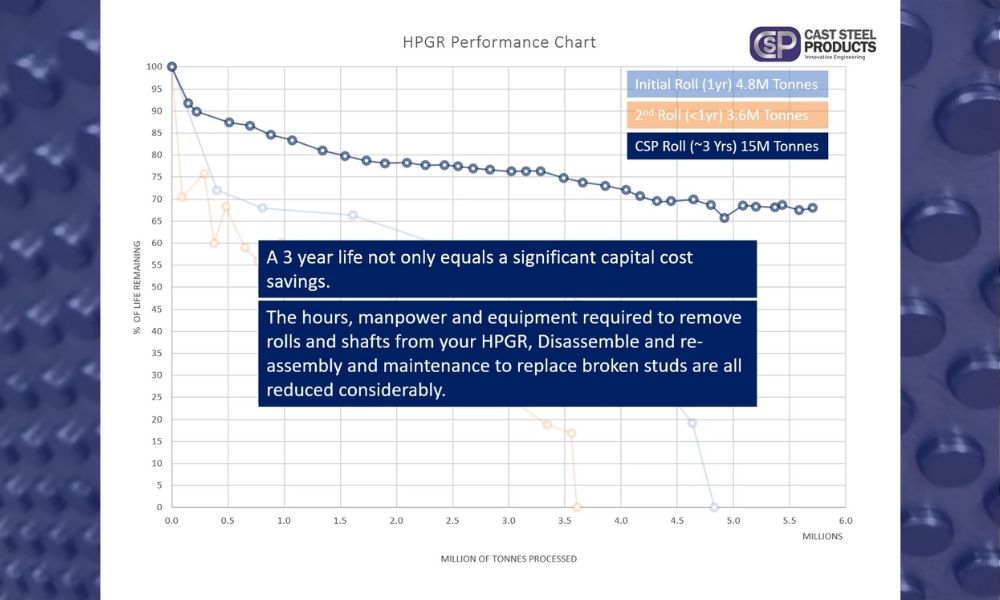Within communition circuits, High-Pressure Grinding Rolls (HPGR) are increasingly replacing traditional milling conventions such as (S)AG or rod and ball mills for hard rock reduction. This is, in part, due to their substantially lower energy consumption and potential for the high cost of ownership reduction. Not only do they require up to 40 percent less energy than traditional milling methods, but their wearable components last much longer than those in rod and ball mills. The downtime required to replace worn parts on an HPGR is much lower than replacing mill liners. In this guide, we will look at HPGR performance in comparison to traditional milling.
Advantages of Inter-Particle Reduction
Rod and ball mills expend a majority of their energy on the coarser particulate within the feed. The finer particulate moves into the interstitial gaps between the media rather than receive the full brunt of the impact. As a result, ball mills produce a more comprehensive array of particulate sizes, requiring additional work downstream. In comparison, the inter-particle compression in an HPGR has a more even effect on the entire feed, resulting in a high ratio of fines with a broad particle size distribution.
Inter-particle compression is achieved by two counter-rotating, similar-sized rolls that synchronously work at variable speeds, forcing particles to crush one another and compressing the feed density to 80 percent of its solid volume.
Offloading (S)AG Mills Pebble Crushing via HPGR
Thanks to its intense pressure and wear-resistant rollers, HPGRs are more effective pebble crushers than conventional cone crushers. In instances where the build-up of pebbles in (S)AG mills can become a bottleneck in meeting the required plant capacity, re-crushing the pebbles is imperative. In a traditional mill, the generated pebbles are re-crushed via cone crushers. However, the hard and abrasive nature of these pebbles results in significant liner wear and frequent downtime. Integrating an HPGR into the pebble re-grinding circuit can alleviate the wear component and improve the (S)AG mill’s overall feed. With HPGR, the re-grinding of historical stockpiled pebbles becomes a viable opportunity for extracting valuable minerals from what was once considered a waste product.
Other Points of Comparison
High-Pressure Grinder Rolls have a few more advantages over conventional milling, in addition to increased reduction qualities. They occupy less physical space than most ball and rod circuits and vibrate comparatively little, thus requiring less support.
There are many HPGR manufacturers. Cast Steel Products is a leading, worldwide supplier of HPGR Roll to OEM and after-sales markets. Our experienced sales and engineering departments work closely with the end-user to determine precisely what is required to supply an innovative custom solution that’s manufactured to ISO 9000 or proprietary standards and designed to deliver. We hope this HPGR performance comparison has informed you on High-Pressure Grinding Rolls. Contact Cast Steel Products to see what they can do for your mining operation.

